For those who have the room at home, welcoming a larger dog to their family can be a wonderful thing. Whether you are looking for a big dog who can double as a guard dog, a larger pup who can keep up with - and enjoy - your favorite outdoor pursuits (running, hiking, even swimming) or just prefer the company of a larger pup, there are lots of them to choose from.
One thing that stops some would-be pet parents from choosing a large breed dog is a fear that they will bark too much. However, a bigger dog does not always equal bigger, or more frequent barks.
There are, in fact, as you'll discover here, some large dog breeds who are quieter than many smaller dogs, and a few who are some of the calmest, quietest pups of all!
Why Do Dogs Bark?
There are a lot of causes for a dog's barking. Dogs don't simply bark because they are able to. They don't bark just to irritate you and your neighbors or out of vengeance or retaliation.
Some barking is useful.
Your pup may, for example, be barking to alert you that he needs to go outside, in which case you can stop him from doing so excessively by meeting that need as quickly as possible (or coming up with a safe way, like a dog door, so he can take care of his bathroom needs himself.)
They may also bark at strangers, which can be a good thing, but you need to introduce him to people like the mail carrier and the pizza delivery person so that they learn that these people are OK to allow near their home, even if they are not a part of their 'pack'.
Large dogs that do not bark as much usually do so because it is a part of their nature, and essentially an inbred thing.
It won't apply to every member of their breed - as every pup is unique - but as a general rule of thumb, some big dogs do bark less, and we are going to introduce you to some of them next.
1. Irish Wolfound
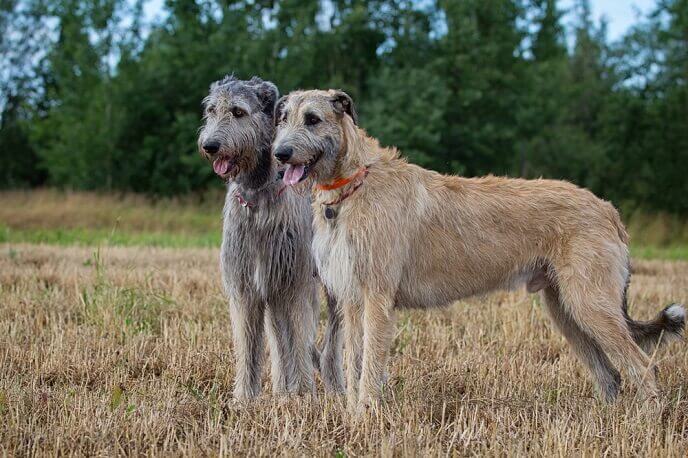
HEIGHT
28-34 in
(71-86 cm)
WEIGHT
105-150 lb
(48-68 kg)
LIFESPAN
8-10 years
Variety of colors
As this is a list of large dog breeds, we might as well start it off with one of the largest: the majestic Irish Wolfhound.
It is in fact the tallest of all the recognized AKC breeds, and can reach up to 35 inches in height at the shoulder - that's almost three feet - and weigh up to 120 pounds when fully grown.
Fun Fact: An Irish Wolfhound can measure up to 7 feet tall when stand on its hind legs.
Historically, the Irish Wolfhound was 'employed' as a warrior dog, and did its duty for a long time. As far back as Ancient Rome, these giant dogs were an integral part of battle forces. The seven Irish Wolfhounds that had been given to the Roman consul Aurelius as a gift were "viewed with astonishment" by "all Rome," he wrote in 391 AD.
The modern Irish Wolfhound is actually a very gentle soul, and a very quiet one. A word of warning, an adult Irish Wolfhound can eat up to 25 pounds of food in a week so being able to afford these hefty food bills is a strong consideration.
They do enjoy - and need - a moderate amount of exercise, about 40 minutes a day, but for the most part are happy to act as a quiet companion enjoying human company, and rarely ever bark unless they sense some imminent threat.
2. Alaskan Malamute
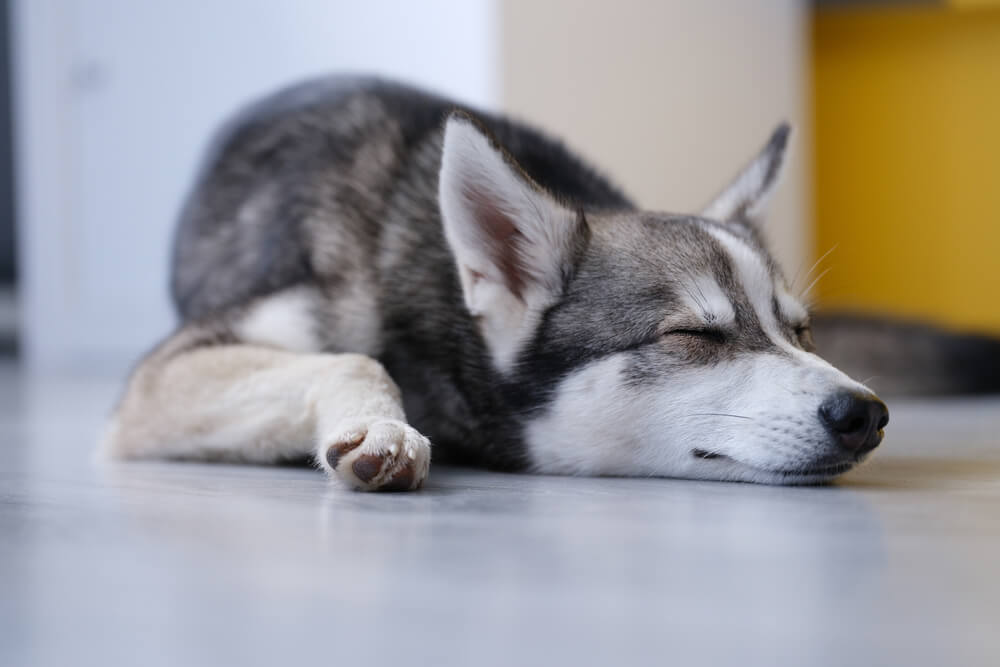
HEIGHT
23-28 in
(58-71cm)
WEIGHT
84-123 lb
(38-56 kg)
LIFESPAN
12-15 years
Variety of colors.
All dogs have white underpants.
Another very large breed pup, the wolflike Alaskan Malamute has more than a little wolf DNA, and his resemblance to one can be quite striking.
These large dogs are surprisingly calm and quiet, though, although more aloof and happy in their own company than some other large dogs. This can be a plus if you will need to leave them alone for an extended period of time when you go to work or school.
Although they can make an excellent family pet, anyone who chooses an Alaskan Malamute has to be serious about ensuring they are properly trained from a young age and have sufficient space and exercise (at least 2 hours a day) given their staggering stamina.
Care Tip: Alaskan Malamutes needs at least two hours of exercise each day but be careful not to over-exercise them in hot weather because they may overheat.
These are headstrong dogs and needs firm handling, but when they are well-trained, they are fiercely loyal to their 'pack' (that's you and your family) and will enjoy joining in with all kinds of outdoor activities.
3. Bernese Mountain Dog
HEIGHT
23-28 in
(58-70 cm)
WEIGHT
71-120 lb
(32-54 kg)
LIFESPAN
Under 10 years
Tri-color coat of black, brown-red and white.
The city of Berne, Switzerland, is where the Bernese Mountain Dog first appeared. Its progenitors arrived in the region thousands of years ago, and among other canines, they are descended from the massive Roman mastiffs who used to accompany the legions on their mountain conquest missions.
Despite their warrior past, this Swiss mountain dog is well known for its sweet, affectionate nature, its eagerness to please and a propensity to be good around - and with - even the youngest children and cats.
Because they do want to please their pet parents, the Bernese, which is already not much of a barker, will usually be quiet right away if gently told to stop barking.
You will need to be willing to put some grooming time in if you choose this pup, not only to prevent excessive shedding but also to keep their thick, often slightly curly, coats shiny, healthy and tangle free.
They also need at least 40 minutes a day of exercise, but while they won't mind a shorter hike, a slow stroll around the park will suit them too.
4. Cane Corso

The Cane Corso is a working dog who absolutely loves having a job to do
HEIGHT
24-27 in
(60-68 cm)
WEIGHT
88-110 lb
(40-50 kg)
LIFESPAN
10-11 years
Gray, stag-red, brindle.
May have white markings.
The Cane Corso is a descendant of another of the dog breeds favored as companions and fighters by the legions of Ancient Rome. Strong and muscular, they were said to fight off bears in the path of the troops, and therefore were particularly useful during campaigns in the still densely forested areas of Europe.
The modern Cane Corso is still just as large and they can look fierce, but are in fact very gentle and love to be part of a family. They do not bark much, unless they are bored.
Mental stimulation is key for keeping a Cane Corso happy (and quiet). They enjoy puzzle toys, and an outdoor activity that seems to have a purpose, like a long hike, or agility activities.
An experienced owner is essential for this extremely strong breed and may not be suitable for families who have small children.
Top Tip: Protective breeds, like the Cane Corso, require early socialization and consistent, firm and regular training to keep their protective natures in check.
Most of all, though, a Cane Corso likes to feel that they have a 'job'. That 'job' can be very simple - to sit quietly and be a lookout when his humans are out, for example - or even keeping an eye on other pets.
5. Borzoi
HEIGHT
27-29 in
(68-74 cm)
WEIGHT
60-106 lb
(24-48 kg)
LIFESPAN
11-13 years
Variety of colors
The Borzoi is a Russian hunting dog (seeing a pattern here? Hunting dogs are usually disciplined enough to know that excessive loud barking is not a good idea, and are measured with the habit, sticking to barking only when they need to).
They are tall, slim and endlessly elegant, as well as calm, quiet, and usually content with their own company.
This noble Russian hound is happy to head off on any outdoor adventure you can dream up for them, and are particularly good at anything that makes the most of their speed and agility.
In their native Russia, they have been used as racing dogs as well as hunters, and will happily keep up with those who like to run.
Borzois have long silky hair and need regular brushing and bathing to ensure their coat stays healthy.
While not as affectionate and cuddly as some large dogs, they are loyal and sometimes even a little vain, lapping up attention from those they know. And why not, they are, after all, exceptionally beautiful pups!
6. Saluki
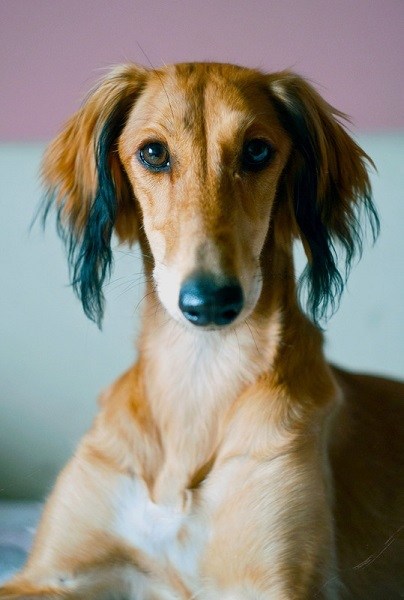
HEIGHT
23-28 in
(58-71 cm)
WEIGHT
35-65 lb
(16-29 kg)
LIFESPAN
12 years
Variety of colors
The Saluki is another ancient warrior dog breed with a long and fascinating history and lineage. They are believed to have been used as sight hunters for thousands of years, and among the great generals who appreciated their skills were Alexander the Great and a succession of Caesars.
The Saluki is a quiet, even sometimes timid pup who rarely makes much noise at all, let alone barks. They can be quite shy around strangers, but do love to be part of a family if they feel loved and comfortable.
The Saluki's great prowess as a sight hunter can be problematic if he is not trained properly, though. If he spots any other animal moving outside - squirrels, other loose dogs, - he will naturally want to chase them, as it's what his breed was created to do.
This means that it is rarely a good idea to exercise him off a leash, and he may be best living as the only pet in your home. He will need that exercise, though, so is only a suitable choice for those willing to head off on an adventure every day.
7. Newfoundland
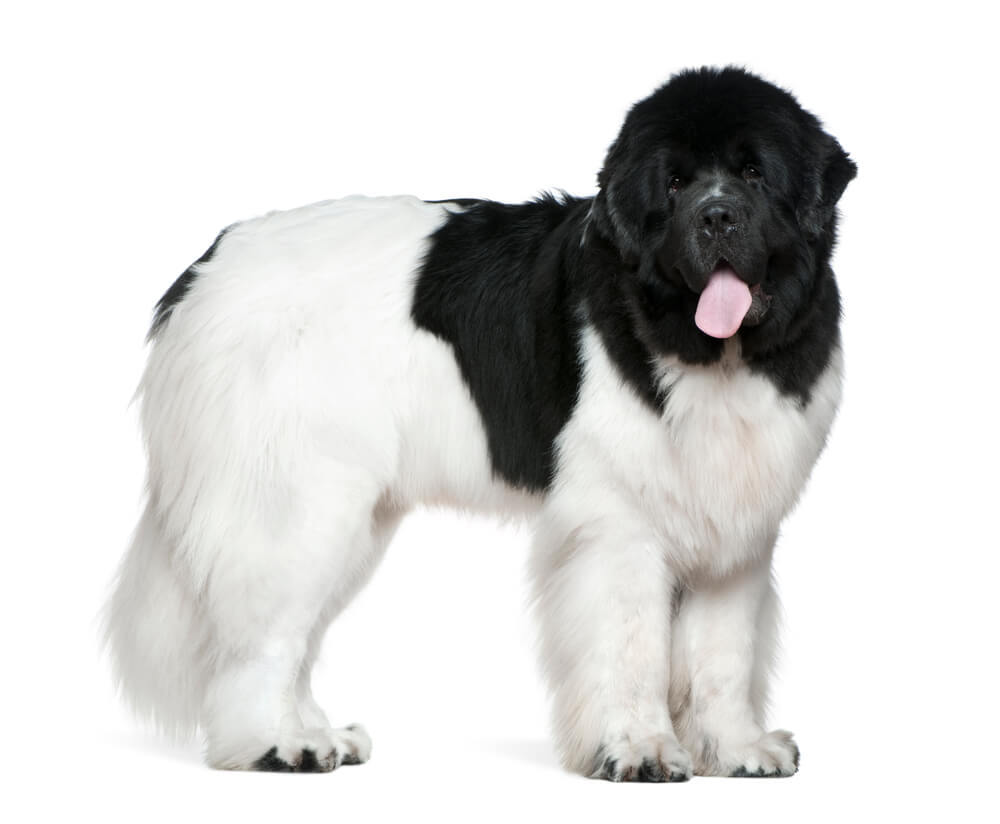
HEIGHT
26-28 in
(66-71 cm)
WEIGHT
110-152 lb
(50-69 kg)
LIFESPAN
9-11 years
Variety of colors
This big, friendly breed is a superb swimmer with a track record of amazing water rescues and that's due to the fact they have large lungs.
Two Newfoundland dogs were previously considered an essential element of the "equipment" on lifeguard stations along the coast of England due to the breed's reputation for performing water rescues. In fact, the Newfoundland has such strong swimming abilities that he could tow a small boat to shore!
Most Newfoundlands kept as pets are quiet, placid and renowned as being very gentle with children.
They are often fine with living with other pets too, including cats. They do tend to shed quite a lot though, as they have dense, thick coats, although a regular brushing can help solve that.
The one thing that Newfoundlands need is space to run. A larger fenced in yard is ideal, although a regular supervised trip to a dog friendly park can be a decent substitute if necessary.
And keeping in mind that they like room to move, a Newfie does not make a great apartment dog either.
8. Great Dane
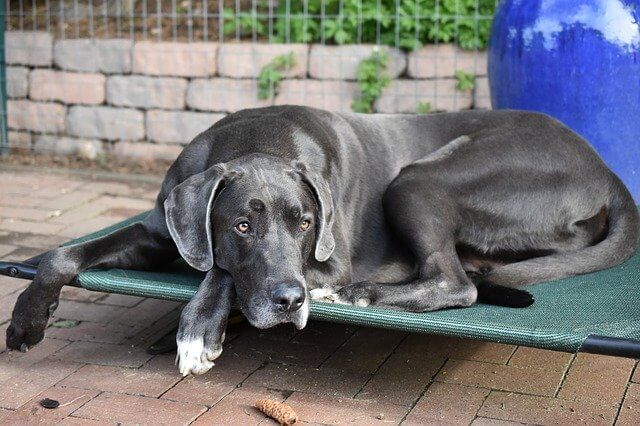
HEIGHT
28-30 in
(71-76 cm)
WEIGHT
101-120 lb
(46-54 kg)
LIFESPAN
Under 10 years
Blue, black, brindle
Great Danes are colossal, often silly and goofy dogs that, despite their size, can make great, and rather quiet family pets if they are given enough exercise and room to move.
The Great Dane - which is also sometimes known as the German Mastiff - has become synonymous with the most famous dog in animation history - Scooby-Doo of course - but in reality the ancestors of the modern Great Dane were boar hunters working in the deep, dark forests of medieval Bavaria.
Fun Fact: Great Danes are one of the tallest of all dog breeds having held the Guinness World Record title for many years.
They were able to track for miles and miles and miles, and their quiet nature may in large part be due to the fact that they have to remain very quiet in order to sneak up on what are also very smart creatures.
Although happy as a home dog, the Great Dane does need a medium amount of exercise, although brisk walks will make him as happy as long treks and even make good apartment dogs - as they don't bark or even shed much - if they get that daily trip to the dog park!
9. Great Pyrenees
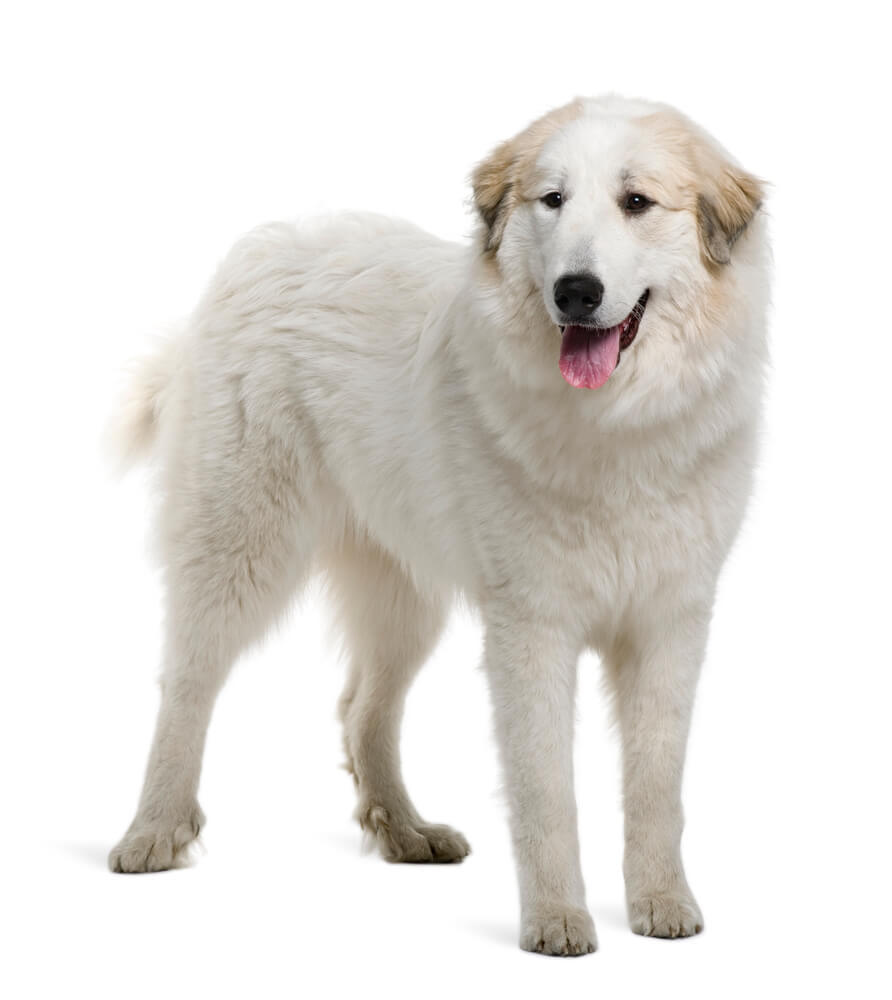
A Great Pyrenees Dog at 9 months old
HEIGHT
26-28 in
(65-70 cm)
WEIGHT
88-110 lb
(40-50 kg)
LIFESPAN
9-11 years
Pure white
Often as white as the mountains they originated from, the Great Pyrenees is a giant dog breed that is far more gentle than their large size might indicate.
However, these big pups, up close, are rarely mistaken for fierce dogs as they are generally unaggressive, friendly and playful, even with those they do not know well.
Unlike many of the large dogs on our list, the Great Pyrenees was not bred to hunt, but instead to guard flocks of sheep. They are not herders, but it was their job to sit with their flocks for hours and use their large presence to deter predators and thieves.
Despite their imposing appearance, they don't need a lot of exercise but do require plenty of regular grooming.
This endless patience translates in the modern pup as a calm, quiet dog who will often tolerate other pets and small children very well.
10. Akita
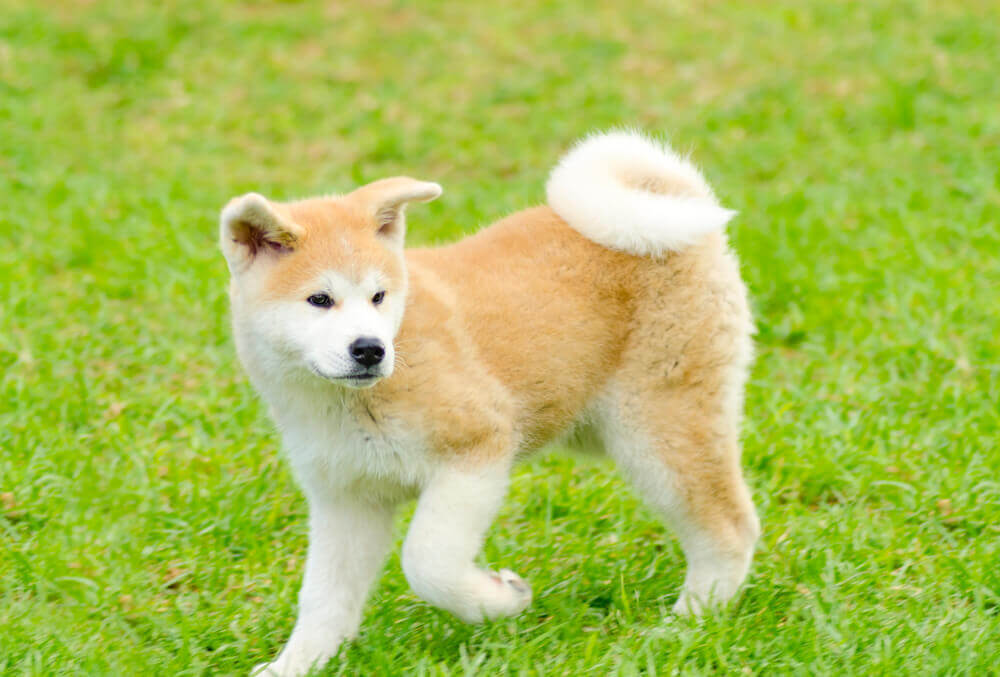
HEIGHT
American: 24-28 in (61-71 cm)
Japanese: 23-28 in (58-70 cm)
WEIGHT
American: 65-115 lb (29-52 kg)
Japanese: 75-99 lb (34-45 kg)
LIFESPAN
10-12 years
Any color
The Akita is the most popular dog in Japan, and has been for many years. He is now gaining popularity in the West too, especially with those looking for a larger dog who is suited to apartment living.
Many Akitas are big - usually 24-28 inches at the shoulder and up to 80lbs in weight when adults - but they are also quiet and obedient. Although their coat is thick and fluffy they do not shed a lot either, another plus for those living in a small space.
Fun Fact: The American Akita, brought into the US in 1937 by American servicemen returning home after World War II, is larger and more imposing than the Japanese - Akita Inu.
In Japan the Akita has been kept as a companion dog for well over a millennia.
They have occasionally been used as sight hunters too, but that is not their primary forte. What they do best is serve as a loyal friend - and just how loyal they can be is the stuff of legend - while also occasionally making people laugh with their clownish antics.
How to Help Any Large Pup Bark Less
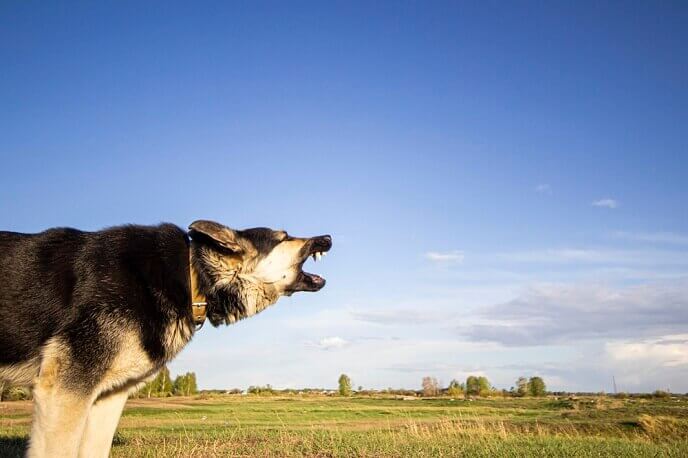
The dog breeds we have covered here are naturally quieter pups not given to barking too much. But there really is no such thing as a dog that never barks.
Even the Basenji , whose unique physiology makes it impossible for him to bark, will howl and whine instead to try to communicate.
Sometimes a dog will bark to try to tell you what they need, in which case you really should listen. It may be that they need to go out, or they are too hot or cold, or that there really is a less than welcome stranger lurking nearby.
However, large dogs will also often bark excessively if they are bored, which is something you can solve by addressing the issue directly. Lots of larger pups are as smart as they are large, and need something a little more challenging than a rubber bone to keep them occupied and engaged at playtime.
The good news is that there are lots of puzzle toys available that can do just that, although you should choose a sturdier one, as many big dogs are tough on flimsy toys and a broken toy will not only frustrate them and waste your money, but they can also pose a choking danger too.
As you will have noticed, a number of the big dogs on our list are also usually very affectionate, and some dogs bark simply to get the attention they want. While they might be OK with being alone sometimes, when everyone is home they would like to be a part of the action too.
You can discourage excessive barking in this situation if it bothers you by ensuring that you do take the time to include them in appropriate family activities and to give them a little extra one on one time too.
Finally, if barking is becoming a real problem, working with a professional dog trainer may be the best solution.
There are as many good dog trainers offering classes online as offline these days, and formal training is often more affordable than you think.
It can also solve a lot more problems than just excessive barking, offering an ROI in terms of a happier, better behaved pup that you really enjoy having as a part of your family that's practically priceless.
Avoid These Breeds
Just as there are breeds that of a quiet disposition when it comes to their barking, there are several large breeds that are known for being very vocal. These include Spitz-type dogs, like the Iceland Sheepdog known for its sharp barking, the Norwegian Buhund.
Many terrier breeds, such as the German and the Austrian Pinscher, tend be barkers - often barking at anything suspicious.

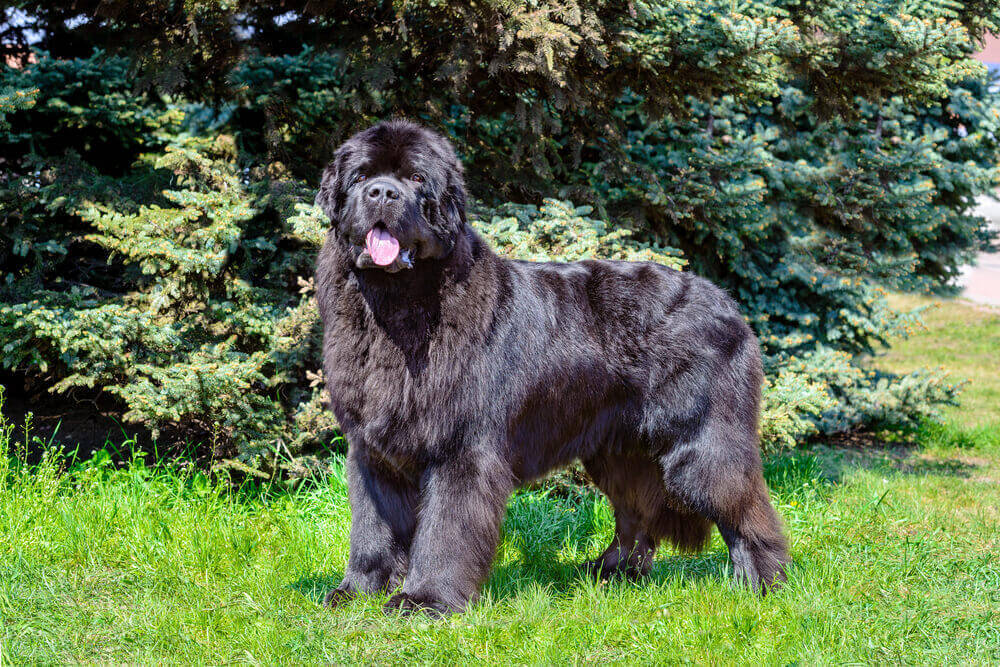

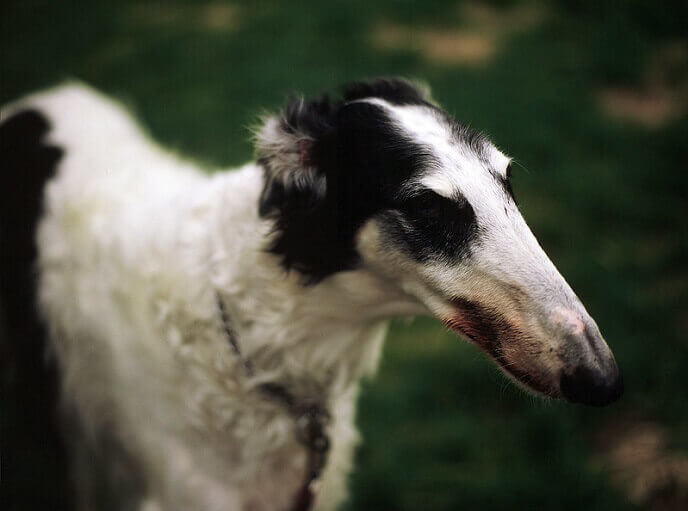
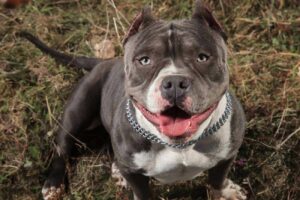
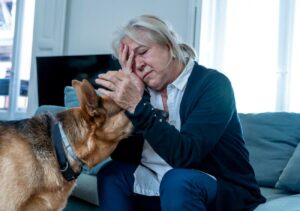
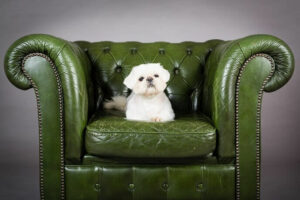
I have a Great Pyrenees and he is a calm and quiet dog, not overly aggressive and wary of strangers but . Amazing personality too.
He sounds great, Mike. Thanks for sharing!